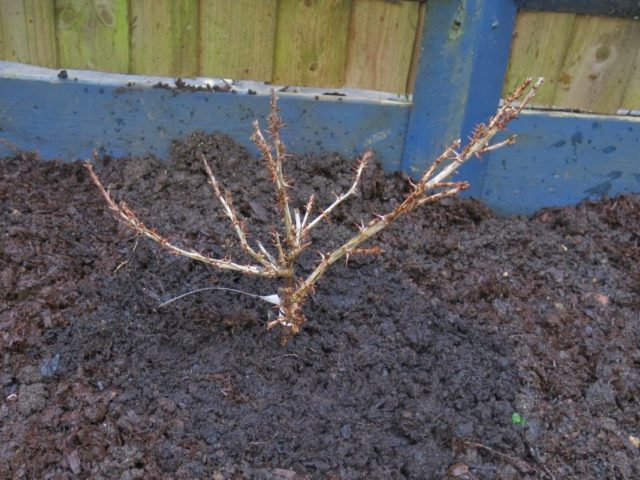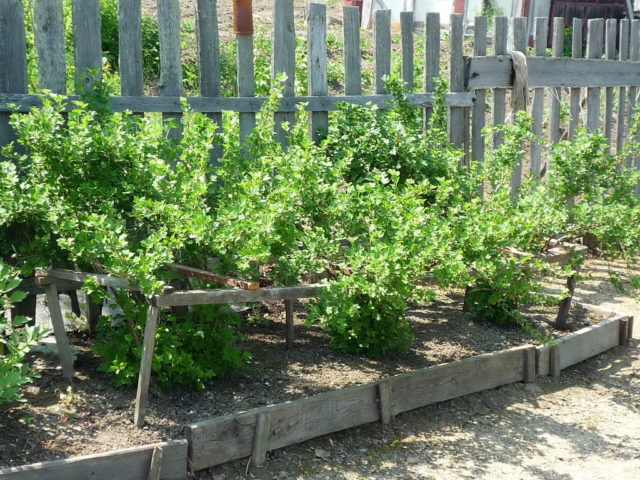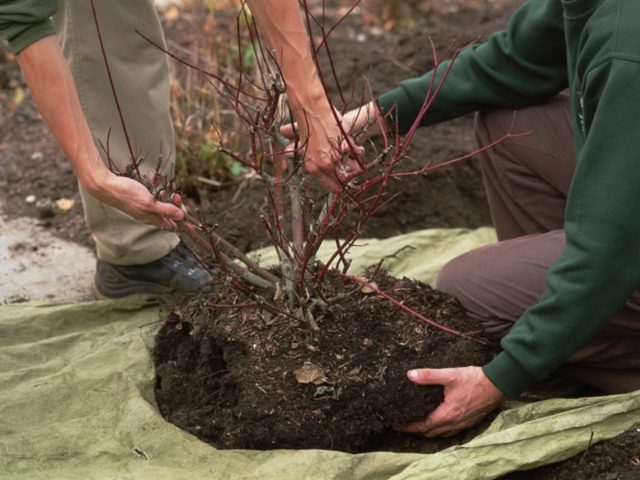Content
Some gardeners prefer to transplant gooseberries in the fall, while others in the spring. But what time is still the most optimal and how to avoid mistakes during work, few know. It will be useful to know the rules of agricultural technology for the transplantation of the Redberry.
When do you need to transplant gooseberries
The reasons why it became necessary to transplant adult gooseberry bushes can be very diverse. Sometimes choosing the right place does not work right away, gardeners do not always take into account the future size of an adult shrub when planting. As a result of the struggle for nutrients and territory, gooseberries either begin to suppress their neighbors, or neighboring plants begin to negatively affect its development and fruiting.
Another significant reason, in the presence of which the transplantation of a shrub is often simply necessary, is its defeat by various diseases that develop due to location in inappropriate conditions. Sometimes, replanting is the only way to save a plant that is dying before our eyes. So, for example, when placed in lowlands, gooseberries become easily vulnerable to fungal infections.
When is it better to transplant gooseberries: in autumn or spring
Many gardeners are wondering when is the best time to transplant gooseberries. Both autumn and spring are suitable for this procedure. However, the most optimal time for transplanting is still the autumn period, when fruiting has already ended, and the bush has entered a state of dormancy. The plant, thus, will be able to direct all its forces to rooting in the soil without prejudice to the formation of fruits. That is why it is better to transplant gooseberries to another place in the fall.
It is possible to transplant gooseberries to a new place in the spring, however, the buds on the shoots of the bush begin to form too early, which is why it is not an easy task to find the optimal timing for transplanting during this period. After the start of bud formation, it is undesirable to stress and injure the root system of the bush. It will be very difficult for her to recover later, since all the forces of the plant during this period are aimed at the formation of deciduous mass. As a result, the adaptation of the transplanted plant will proceed slowly, which, in turn, will negatively affect its development and the quality of the crop.
How to transplant gooseberries to a new location in spring or fall
After deciding to transplant gooseberries from place to place, you need to familiarize yourself with all the intricacies of this process. Otherwise, for an inexperienced gardener who has never dealt with this crop before, it is easy to make many mistakes during transplanting, which in the future can negatively affect the development of the plant.
When to transplant gooseberries in spring
In order to properly transplant gooseberries in the spring, it is important, first of all, to determine the timing of the work.The buds on the shoots of the plant begin to swell very early, with the arrival of the first warm days. And by the end of May, most varieties of this shrub are already beginning to bear their first fruits.
For each region, the optimal dates for transplanting gooseberries in spring are individual, moreover, in different years they can move forward or backward and within the same region.
Is it possible to transplant gooseberries in April
In some regions, where spring warming starts too late, shrub transplantation is allowed in early April. These include, for example, the territory of Siberia and the Urals. In this case, the main thing is also to rely on the basic rule and start planting work before the start of sap flow.
When to transplant gooseberries in the fall
Determining when exactly to transplant gooseberries to a new place is much easier in the fall. As a rule, the period from late September to early October is suitable for transplanting, when the processes of vital activity will slow down and all the leaves will fall off the shoots. The exact date is chosen depending on the weather conditions of the region. Before the onset of the first frosts, there should be enough time for the transplanted bush to take root and get stronger.
Site selection and soil preparation
When choosing a planting site, it should be borne in mind that gooseberries love well-lit areas with moist soil. However, it is not recommended to place the plant in lowlands, where water stagnation forms, as a result of which the soil often turns out to be swampy. Prolonged exposure to waterlogged soil can lead to decay of the root system and the development of fungal diseases, to which most varieties lack immunity.
The site must also be protected from gusts of through wind. That is why the plant is often planted next to a fence. In this case, the distance from the bush to the fence should be at least 1.5 m.
It is not recommended to place gooseberries in areas where raspberries or currants grow or have grown shortly before, since these crops are characterized by the same diseases and pests. As a result, a completely healthy bush after transplantation can take over any disease from its predecessor.
When transplanting, it is also important to consider that light loamy soil is most suitable for gooseberries. Peat or sand is added to too heavy soil to lighten it, clay is added to too light. The acidity of the soil should be low. The selected area must be dug up, while cleaning it from all plant residues.
To obtain a rich harvest next spring, care should be taken in advance that the plant can receive from the ground all the nutrients necessary for the normal growth of shoots, the development and formation of fruits. For this purpose, a fertile soil mixture is prepared, which will subsequently be filled with planting holes. It consists of the following components:
- 2 parts of the topsoil;
- 1 part compost.
Preparing gooseberry bushes for transplanting
Gooseberry bushes must first be prepared for transplantation. The preparation algorithm is as follows:
- Prune old, thorny shoots. Only the youngest and strongest branches (6 - 7 pieces) should be left. Shorten remaining shoots by one third. This will make it easier to work with the plant.
- Draw a circle around the bush at a distance of about 30 cm from each side.Dig in a bush along this circle, chopping up all the roots outside it with a shovel or ax.
- Using a shovel or crowbar, pull the bush out of the ground, put it on tape and deliver it to the place chosen for transplantation.
If the transplanted bush is too large and massive, then the diameter of the part that needs to be dug in can be determined based on the size of the crown. The bush itself should be removed from the ground carefully, being careful not to damage the root system.
How to properly transplant gooseberries to another place
Gooseberries can be transplanted to another place using several methods. Below is the simplest and most popular one.
Transplant algorithm:
- Dig a planting hole in the selected place of a slightly larger diameter in comparison with the size of the earthen coma. The depth of the planting pit should be, on average, about 50 cm.
- Pour 4 buckets of water into the pit, fill with the prepared soil mixture.
- Place the bush in an upright position or slightly at an angle in a hole, deepening no more than 7 - 10 cm. Holding the plant, fill the free space on the sides with the remnants of the fertile mixture.
- Tamp the ground, moisten abundantly (3 buckets of water for 1 plant).
Rules for caring for gooseberries after transplantation
Immediately after transplanting the gooseberry in the fall, it is recommended to mulch the trunk circle with a layer of peat, thanks to which the moisture will not evaporate so quickly. Shoots should be cut to the last, located at the very bottom, buds.
Further care is simple and consists in regular watering, before which the mulch layer is removed, and then returned back. The transplanted bush does not need shelter for the winter: it is enough just to sprinkle it with sawdust.
Caring for gooseberries after transplanting to a new place in the spring is somewhat different. Watering at this time should be done carefully, trying not to overmoisten the soil. First of all, you should focus on the amount of precipitation. Among other things, regular weeding, fertilizing with complex fertilizers and measures to protect against pests are added to the care of the transplanted bush in the spring.
A plant transplanted in spring will be capable of fruiting as early as next year. An exception is made by bushes, the cause of transplantation of which is disease. You should expect a harvest from them only for the 2nd - 4th year.
What mistakes are most often made by gardeners
The most common mistakes among gardeners when transplanting gooseberries are:
- Removing an earthen coma before transplanting. An adult plant does not like exposing the roots: if planted without a clod of earth, it will take root worse, develop more slowly and hurt more often.
- Planting in depleted soil, neglecting the addition of organic fertilizers. For normal development, gooseberries need a lot of nutrients, and in ordinary soil they are usually not enough. That is why compost is mandatory introduced into the planting pits.
- Water temperature too low when watering. A comfortable water temperature for gooseberries is from 18 to 25 degrees Celsius.
Conclusion
When to transplant gooseberries, in autumn or spring, each gardener must determine for himself. The best time for work is autumn. However, there are situations when there is simply no way to wait until autumn, as, for example, in the case of a bush affected by various diseases. If you adhere to the basic rules, the transplant will only benefit the plant.













